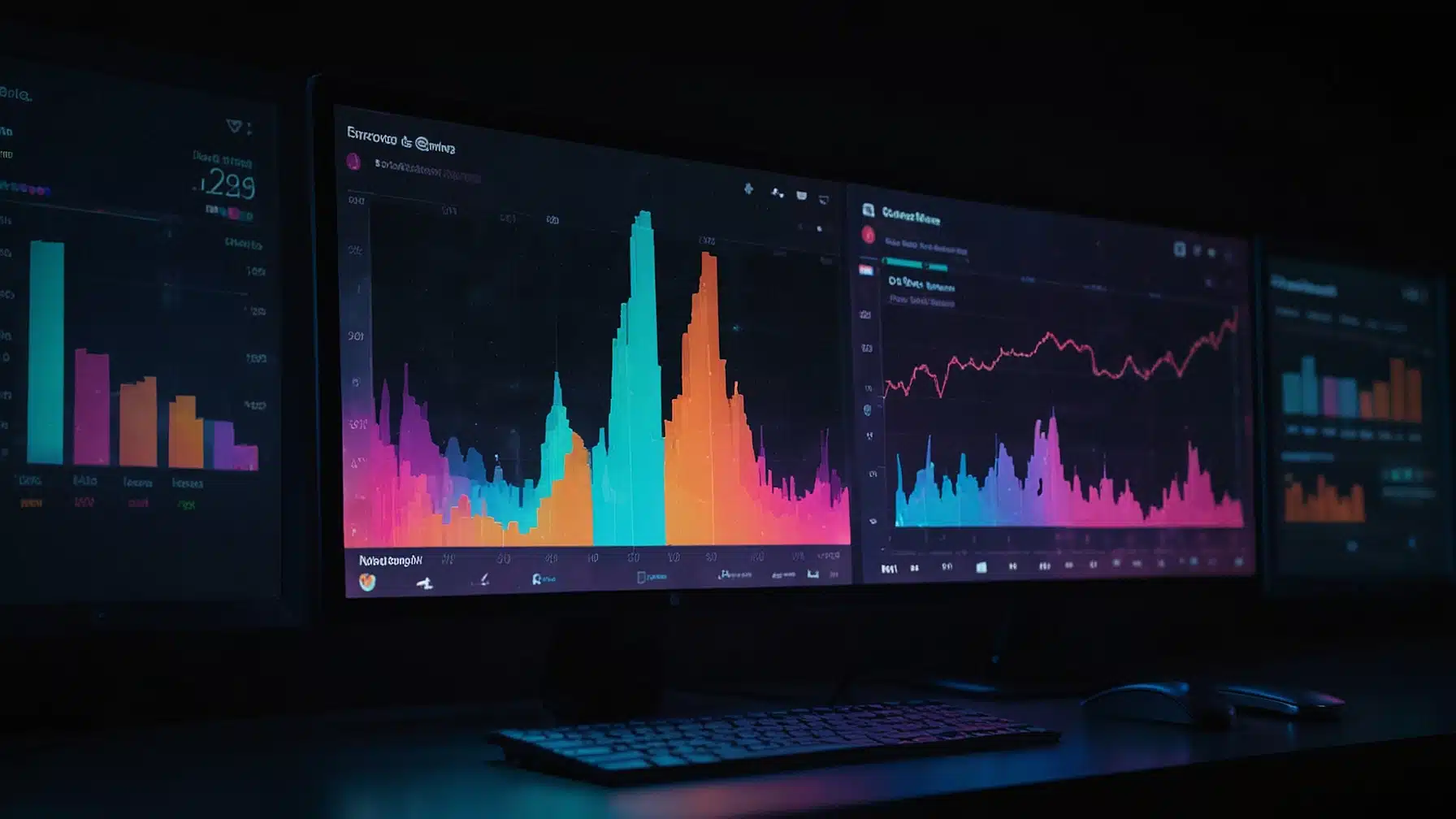A/B testing on YouTube is a powerful tool that helps you find the best versions of your video titles, thumbnails, and descriptions. By comparing two variations, you can see which one drives more clicks and engagement. This method can significantly boost your click-through rate (CTR) and overall video performance.
For instance, testing different thumbnails can reveal which image attracts more viewers to your video. It’s as simple as uploading two versions and letting YouTube show them to different segments of your audience. Over time, you’ll gather data on which thumbnail performs better, allowing you to make an informed decision.
You can also use A/B testing for video titles and descriptions. Changing one element at a time gives you clear insights into what works best for your audience. As a result, you can optimize your videos to get more views and grow your channel. To start A/B testing on YouTube, check out tools like TubeBuddy or ThumbnailTest.com.
Understanding A/B Testing on YouTube
A/B testing is a crucial method for creators to improve video performance on YouTube. By using data and analytics, you can make informed decisions about what thumbnails, titles, and descriptions work best.
Concepts and Importance of A/B Testing
A/B testing involves comparing two versions of a thumbnail, title, or other video element to see which one performs better. It helps you understand what attracts viewers. For example, you can test if a bright thumbnail gets more clicks than a darker one. Small changes can make a big difference in viewer engagement and watch time.
Testing isn’t guesswork. It’s a method to see what actually works. Data-driven decisions replace assumptions, leading to more views and better engagement.
YouTube as a Platform for Creators
YouTube offers tools in YouTube Studio to help you conduct A/B tests. You can also use third-party tools like TubeBuddy and Thumbnail Test to run these experiments.
A/B testing on YouTube is especially effective because the platform shows results quickly. Viewer habits and preferences can change fast, so ongoing testing helps you stay current.
By understanding what works, you can tailor your content and improve your channel’s growth.
The Role of Analytics in A/B Testing
Analytics play a key role in A/B testing on YouTube. YouTube Studio provides data on click-through rates, watch time, and viewer demographics. This information helps you decide which tests to run and how to interpret the results.
Using analytics, you can pinpoint what causes a video to succeed or fail. For example, a test might reveal that a certain type of thumbnail increases click-through rates. By analyzing these insights, you can continually improve your videos and better meet your audience’s preferences.
In essence, analytics transform raw data into actionable insights, allowing you to make strategic decisions.
Setting Up A/B Tests for YouTube Content
To optimize the performance of your YouTube videos, setting up effective A/B tests is crucial. You’ll need to identify key variables, create structured tests, and use the right tools to analyze your data.
Identifying Variables for Testing
Choosing the right variables is essential. On YouTube, common variables include thumbnails, video titles, and descriptions. Thumbnails can significantly impact click-through rates and should be visually engaging and relevant.
Video titles need to be compelling and clear about the content. Testing different keywords and phrasing helps in finding what drives more views.
Descriptions can also be tested. Including relevant keywords and timestamps might improve viewer engagement and ranking. Tracking each variable separately allows you to understand what drives success.
Creating Effective A/B Test Structures
Structure your tests for clear results. Start by choosing a single variable to test, such as thumbnails. Upload at least two different thumbnails and set them to rotate either daily or hourly.
Make sure your testing period is long enough to gather meaningful data. A week is often sufficient. Track metrics like click-through rates, watch time, and viewer engagement.
It’s important to only change one element at a time. This ensures you know which change is driving the results. Document your processes and findings for future reference.
Tools and Resources for A/B Testing
Several tools can assist in setting up A/B tests. YouTube Studio offers built-in options for thumbnail A/B testing, while TubeBuddy provides more advanced features like metadata testing.
TubeBuddy allows you to test different tags, titles, and thumbnails, providing detailed analytics. Another resource is ThumbnailTest.com, which specializes in thumbnail testing and can help optimize click-through rates.
Using these tools simplifies data collection and analysis, helping you make informed decisions to improve your content strategy. Utilize their features to track and compare performance, ensuring your tests are effective and actionable.
Analyzing A/B Test Results
When analyzing A/B test results on YouTube, you need to focus on understanding the key performance metrics, ensuring statistical significance, and translating your findings into actionable insights.
Understanding Key Performance Metrics
To analyze A/B test results, you first need to know which metrics matter. For YouTube, some crucial metrics include views, watch time, engagement, and subscriber growth.
Views tell you how many times each version of your video is watched. Watch time shows the total minutes viewers spent watching your video. Engagement encompasses likes, comments, and shares. Subscriber growth measures how many new subscribers you gain through the test.
Breaking down these metrics helps you see which version performs better. For instance, if one video gets more watch time, it might be more engaging. This deeper look can show which elements resonate with your audience, like video length or thumbnail style.
Statistical Significance and Data Interpretation
After gathering data, you need to check for statistical significance. This ensures that your results aren’t due to random chance.
Start by defining your confidence level. A common choice is 95%. Next, use tools or software to calculate if the difference in metrics, like views or watch time, is significant. If your result meets the confidence level, your findings are likely accurate.
Understanding statistical significance helps you make confident decisions. It confirms whether one version of your video truly outperformed the other. Without it, you risk making changes based on unreliable data, which can hurt your channel’s growth.
Translating Data into Actionable Insights
Once your data is clear and significant, it’s time to turn it into actionable insights. Look closely at what the metrics tell you. If one video had more engagement, consider what elements contributed.
For example, if a new thumbnail design significantly boosted views, apply that style to future videos. If longer videos increased watch time, you might want to try more extended content.
Actionable insights help to improve your content strategy. They guide you in making informed decisions that align with your audience’s preferences. This continuous improvement process based on data ensures your channel grows and engages viewers effectively.
Optimizing Your YouTube Strategy
To optimize your YouTube strategy, pay close attention to video titles, thumbnails, and metadata. These elements can significantly impact viewer engagement and your video’s visibility on the platform.
Enhancing Video Titles and Descriptions
Effective A/B testing of your video titles and descriptions can greatly increase engagement. Choose titles that are clear, relevant, and contain keywords related to your content. A good title can boost your Click-Through Rate (CTR). Descriptions should also be detailed and include relevant keywords to improve SEO. Using a structured format with bullet points or lists can make descriptions easier to read and more informative.
Example:
Title:
“Top 10 Gardening Tips for Beginners”
Description:
- Learn how to start a garden with these essential tips.
- Key topics include soil preparation, plant selection, and watering techniques.
- Subscribe for more gardening advice!
Effective Thumbnail Testing and Selection
Thumbnails are a crucial aspect of attracting viewers. Use A/B testing to compare different thumbnails to see which one gets more clicks. A thumbnail should be visually appealing, with clear and vibrant images. Test elements like color, text, and layout to determine what works best. Tools like TubeBuddy can help you conduct these tests and track performance.
Example:
- Thumbnail A: Close-up of a blooming flower with title text overlay.
- Thumbnail B: Wide shot of a garden with no text.
By comparing the click rates of both thumbnails, you can choose the one that brings more viewers.
Leveraging Tags and Metadata for SEO
Using tags and metadata effectively can enhance your video’s SEO, making it easier for viewers to find your content. Tags should be specific and include relevant keywords. Metadata, including video descriptions and titles, should be optimized for search engines. Tools and platforms such as TubeBuddy or ThumbnailTest.com can assist in identifying the best tags and organizing your metadata.
Example:
- Tags: Gardening, Beginner Tips, Plant Care
- Metadata: Ensure the description matches the content and uses targeted keywords like “gardening tips” and “how to start a garden.”
By focusing on these areas, you can improve your YouTube SEO and increase your video’s visibility, ensuring your content reaches a wider audience.









